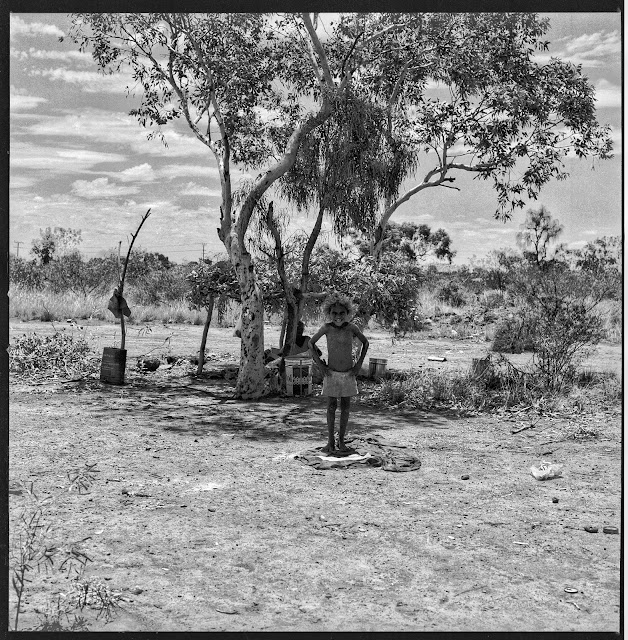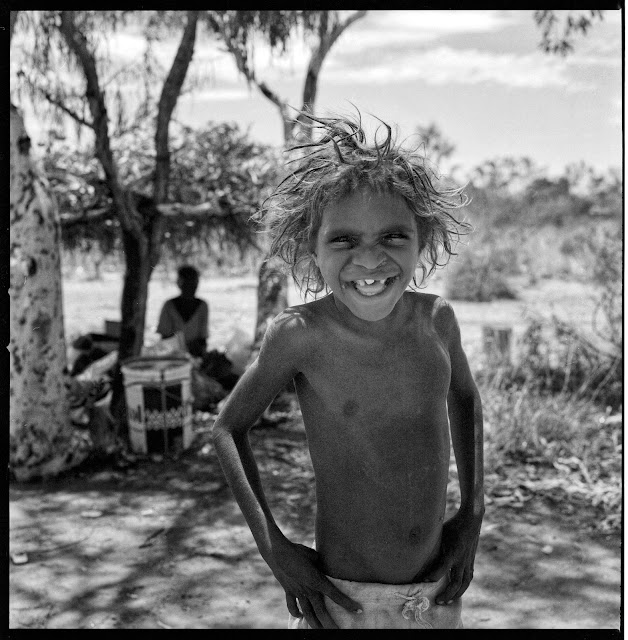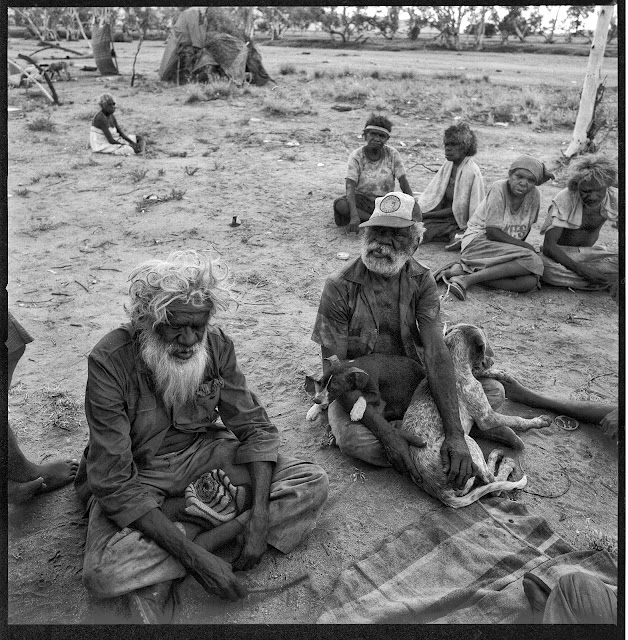Photographic essay and portfolio on
Aboriginal life from Outback Australia in 1988.
The term Outback came about in the 19th Century. It was used to refer to places that were 'out the back of X (insert a place name). A similar term is 'back of beyond'.
Basically, it's somewhere inland in Australia, a long way from the sea.
Aboriginals: This is a western name for the indigenous people of Australia.
“A journey is a fragment of Hell.”
― The Songlines
Text and all images by Michael Klinkhamer ©
Recently I revisited my photo work in Australia from 33 years ago.
This body of work was photographed in 1988 and published and exhibited previously in 1990.
This time I scanned all the negatives and selected 37 images available for online blog portfolio, future exhibitions and book publication.
The Hasselblad 6x6 camera and lenses and film produced a timeless classic image quality.
*Note all images are uncropped full frame 6x6 negatives, available as 50x50 cm prints.
*All images are available for fine art printing and exhibition or collecting purposes.
At the time in 1989-'90, I made a first selection of the images and hand-printed them in colour in the darkroom.
This time in 2020 I present 37 images in black and white digitally.
Many of them are never published or printed in black and white.
For me, this was a wonderful delight of rediscovering as a precious hidden gifts.
Some images are as new to me as they are to you. Amazing faces from 33 years ago looking at us today.
In 1988, at the age of 27, I explored Australia for the first time and was fascinated by the first Australians, the Aboriginals.
Then I wanted to find out what their real situation was and how the locals lived and functioned in the modern world at the time at the deep, dusty and hot heart of Australia.
What I found there in the Outback in '88 was nothing less than utter despair and disconnect to the world modern world they lived in.
But also a sense of family life, asian like hospitality hopeful kids and friendship.
"People who are self-reliant have a deep knowledge of the land are the true survivors of our time."
You might perhaps have your political correct reservations and thoughts about me exploiting poor people. Trust me, this was and is not the case. As a photographer, you always have to engage and go out to find the truth and connect with people.
I was perhaps ill-informed to know exactly what I was photographing in-depth but learned a whole lot in the process. I dearly hoped that the aboriginals I would found lived in an almost traditional manner and close to their culture in natural bliss.
As you can see reflected here this was and still is not the case, especially along the fringes of the main and only "highway" penetrating the continent from north to south.
What I actually found were 'time travellers', nomadic people lost in time and place along the highway.
"Photography has the intrinsic power to 'capture time and places'
As time goes on and the people gone the pictures become more valuable to understand and remember what was."
The full reasons for the demise of the Aboriginal people is basically a story of genocide, poisoning, abuse, and colonial land grab over a period of two hundred years. From the indigenous people who lived there for thousands and thousands of years before the Europeans set foot in 1642. (Abel Tasman)
"Of course, the traditional life of the Aboriginals is not to be found along the highway.
This story only shows a fraction of the complex story of very old people of this land."
For me, it was the first look into their world. From my beat-up little station car with a medium format Hasselblad camera and a bag full of 120 roll films.
For me, it was the first look into their world. From my beat-up little station car with a medium format Hasselblad camera and a bag full of 120 roll films.
Making intuitive portrait sessions and unplanned stops along the Stuart Highway.
From Darwin, in the Northern Territory, I travelled the Stuart Highway.
A hot and dusty 2834 kilometre leading line to explore and drive across the continent in December until I reached Sydney on 26th of January.
Then it was the lead up to Australia day of '88 with thousands of people letting their voices be heard.
The first Australians knew their land inside out and have a sacred connection deeper into the countryside, but since it's all desert and full of hardship the traditional lands are made by colonization not sustainable to them anymore.
At the time I was learning this and looking for images and experiencing such a dramatic world that felt like a time travel in another world. Right there in the Northern Territory around mining towns such as Tennant Creek and Alice Springs.
I stayed for a week in the mining town of Tennant Creek and was welcomed by the Aboriginals living there in very basic government housing that was made available.Alcohol being heir worst enemy now.
Others were finding shelter in the bush, underneath trees and self-made bush 'humpy's' or wurly shelters as they are called by the locals.
My first move in action was always to locate the local village council or tribal elder and ask for permission to look around and take a few shots.
When I felt welcomed I often experienced the same kind of connection and curiosity as in India or Indonesia with families or a bunch of people living under the scorching hot sun.
The southern hemisphere summertime in December and January with temperatures reaching 45-50C in the shade.
When I look at my pictures now I see a lot of poverty, neglect and despair but also strong family life, friendly beautiful smiles and shiny eyes, chaotic drinking bouts and caring fathers and mothers loving their children.
During the day gatherings in the bush under a eucalyptus bush tree, just sitting there like they did 200 years or even forty thousands of years ago.
"I realized that I only scratched the surface of this history."
In hindsight, it was a spectacular photographic journey that ended in the first European settlement of Australia, Sydney.
In hindsight, it was a spectacular photographic journey that ended in the first European settlement of Australia, Sydney.
Exactly 200 years later on Australia day 26th of January 1988.
Once we reached Sydney I had a sense of belonging and more understanding of the Aboriginal people and the challenges they and Australia face.
Once we reached Sydney I had a sense of belonging and more understanding of the Aboriginal people and the challenges they and Australia face.
These images also make me wonder how are some the kids in the pictures I photographed back some 33 years ago doing now?
Did their lives improve after the 1988 Bicentennial movement?
Did their lives improve after the 1988 Bicentennial movement?
Portfolio:
Michael Klinkhamer is a Dutch photographer and journalist working mostly in Asia for the last 10 years. Michael lives due to the COVID crisis back in Amsterdam and is available for assignments and photography adventures in Cambodia, Thailand, Australia, Hawaii and his native Holland once this is possible again.
tel: +31(0) 616662813 or email: klinkhamerphoto@gmail.com




































